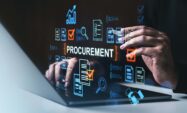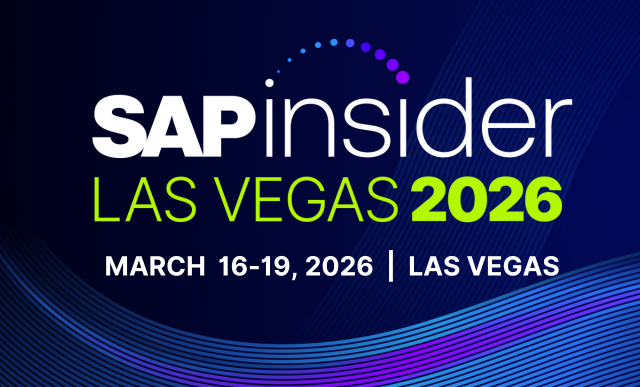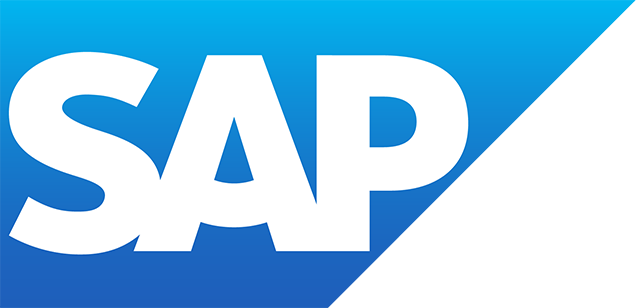SAP Procurement
Filter By
Browse By
- SAP Analytics and AI
- SAP Application Development and Integration
- All SAP Application Development and Integration
- SAP ABAP
- SAP ABAP Development Tools
- SAP ABAP Test Cockpit
- SAP API Management
- SAP BAPI
- SAP Basis
- SAP BRF
- SAP Business Application Studio
- SAP CMS
- SAP Design Studio
- SAP Development Tools
- SAP DevOps
- SAP EAI
- SAP EDI
- SAP Extension Suite
- SAP Fiori
- SAP Fiori Elements
- SAP Integration Suite
- SAP Low Code Application Development
- SAP Low Code Automation
- SAP Netweaver
- SAP Release Management
- SAP UI5
- SAP Web Application Server
- SAP Web IDE
- SAP Business Process Management
- SAP Center of Excellence
- SAP CIO
- SAP Customer Experience
- SAP Data and Data Management
- All SAP Data and Data Management
- SAP BW
- SAP BW/4HANA
- SAP Crystal Reports
- SAP Data Archiving
- SAP Data Center
- SAP Data Governance
- SAP Data Integration
- SAP Data Migration
- SAP Data Quality
- SAP Data Services
- SAP Data Strategy
- SAP Data Visualization
- SAP Data Warehouse Cloud
- SAP DMS
- SAP Document Control
- SAP EIM
- SAP ETL
- SAP ETL Tools
- SAP HANA
- SAP HANA Administration
- SAP HANA Deployment Infrastructure
- SAP HANA Studio
- SAP Master Data
- SAP Master Data Governance
- SAP MDM
- SAP Enterprise Architect
- SAP Enterprise Asset Management
- SAP ERP
- SAP Finance
- All SAP Finance
- SAP Accounting
- SAP AR AP
- SAP Asset Accounting
- SAP Billing Systems
- SAP BPC
- SAP BRIM
- SAP Cash Management
- SAP Central Finance
- SAP Controlling
- SAP COPA
- SAP Cost Center Accounting
- SAP Currency Risk
- SAP e-invoicing
- SAP FICO
- SAP Finance Automation
- SAP Advanced Financial Closing
- SAP Financial Consolidation
- SAP Financial Planning
- SAP FX Risk
- SAP General Ledger
- SAP Global Tax Management
- SAP Hyperion
- SAP Order to Cash
- SAP Payment Processing
- SAP Profitability Analysis
- SAP Rebate Management
- SAP S/4HANA Finance
- SAP SWIFT Compliance
- SAP Treasury Management
- SAP Universal Journal
- SAP Governance Risk and Compliance
- SAP Human Capital Management
- SAP Intelligent Technologies
- SAP Platform and Technology
- All SAP Platform and Technology
- SAP Business Technology Platform
- SAP Cloud
- SAP Cloud Connector
- SAP Cloud Integration Platform
- SAP Cloud Migration
- SAP Cloud Platform
- SAP Cloud Providers
- SAP Cloud Strategy
- SAP Digital Signature
- SAP Container Platform
- SAP HANA Enterprise Cloud
- SAP Digital Asset Management
- SAP Smart Forms
- SAP HEC
- SAP Digital Integration Hub
- SAP Hyperscalers
- SAP Infrastructure
- SAP Messaging
- SAP Quality and Testing
- SAP Security
- SAP Spend Management
- SAP Supply Chain Management
- All SAP Supply Chain Management
- SAP APO
- SAP Asset Management
- SAP Business Network
- SAP Digital Manufacturing Cloud
- SAP Digital Twin
- SAP EWM
- SAP IBP
- SAP Inventory Management
- SAP Label Printing
- SAP Logistics
- SAP Manufacturing
- SAP Manufacturing Automation
- SAP MES
- SAP MII
- SAP MM
- SAP MRO
- SAP MRP
- SAP Order Management
- SAP Plant Maintenance
- SAP PLM
- SAP Production Planning
- SAP S&OP
- SAP SD
- SAP SPM
- SAP Supply Chain Planning
- SAP Track and Trace
- SAP Transportation Management
- SAP System Administration
Supply Chain Management: SAP Procurement
Strategic and innovative procurement is at the forefront of the supply chain today. While the root of procurement is all about connections and relationships, digitalization has now streamlined the experience and visibility. There are new opportunities to master the ability to maintain the right balance between the intersections of quantity, price, and time.
Procurement Simply Defined
Procurement is a process of acquiring goods or services in the right quantity, at the right price, and at the right time. Understanding supply chains is an important step because it helps to find reliable suppliers that best fit the business requirements. Minimizing cost is a crucial aspect but it should be combined with capacity planning, quality, and delivery reliability. Some organizations are using SAP Procurement, which is one aspect of supply chain management. It involves all activities in daily business operations for obtaining goods and services. There are generally three stages in the procurement process: sourcing, purchasing, and payment.
Supply Chain Management: SAP Procurement
Strategic and innovative procurement is at the forefront of the supply chain today. While the root of procurement is all about connections and relationships, digitalization has now streamlined the experience and visibility. There are new opportunities to master the ability to maintain the right balance between the intersections of quantity, price, and time.
Procurement Simply Defined
Procurement is a process of acquiring goods or services in the right quantity, at the right price, and at the right time. Understanding supply chains is an important step because it helps to find reliable suppliers that best fit the business requirements. Minimizing cost is a crucial aspect but it should be combined with capacity planning, quality, and delivery reliability. Some organizations are using SAP Procurement, which is one aspect of supply chain management. It involves all activities in daily business operations for obtaining goods and services. There are generally three stages in the procurement process: sourcing, purchasing, and payment.
9 Steps in the Procurement Process are:
- Identify the goods and services needed
- Submit a purchase request
- Review and select vendors
- Negotiate terms and pricing
- Create a purchase order
- Receive and inspect the quality of goods
- Conduct three-way matching in accounts payable
- Approve the invoice and make payment
- Record keeping.
Key components work together to make the procurement process happen. They include people, process, and paperwork. Building and maintaining relationships should be a top focus for procurement professionals to gain a competitive edge. By monitoring procurement KPI’s, businesses can empower teams to analyze savings and track supplier performance in a more simplified way.
Benefits of Procurement are:
- Higher productivity
- Lower management expenses
- Trusted supplier relationships.
Using intelligent technology to harmonize processes and approvals will lead to cutting costs, driving compliance, and gaining visibility for an organization. Vendor partners that can offer solutions and services for software or strengthen process efficiencies include – SAP, Reveal or Gib.
Further insights for SAPinsiders are:
- The Future of Enterprise Procurement: Saravanan Narasimhan outlines the benefits of a digital landscape for procurement. Stressing that a successful means of digital procurement in the corporate world is through early involvement. Redefine procurement from a tactical expense to a strategic investment.
- Streamline Procurement Processes with the Raw Material Procurement Cockpit. Kaushik Choudhury explains the raw material procurement cockpit features, which can be used by small or large businesses. It supports planners working with multiple suppliers for the same material or several materials.
- Sneak Peak: Sustainable Procurement as an Embedded Process in Supplier Management Activities. William Newman shares how to stay ahead of the curve on sustainability by previewing these conceptual roadmaps and the expected releases of related SAP functionality.
15 results
-

How to Know When It’s Time to Buy SAP Ariba Snap
Reading time: 1 mins
SAP Ariba Snap is designed to revolutionize procurement by automating manual tasks, improving spend visibility, and fostering supplier collaboration. Its scalable platform enables organizations to manage compliance and risk effectively while supporting long-term growth and efficiency gains.
-

GSA OneGov Sets Global Benchmark for SAP’s Intelligent Enterprise
Reading time: 3 mins
The new GSA OneGov agreement with SAP aims to transform U.S. federal technology beyond simple cloud migration by creating a secure, AI-driven operating system, streamlining procurement to save taxpayers $165 million, and fostering continuous innovation while aligning with the White House’s AI Action Plan.
-

Digitizing Source-to-Pay: How SAP and Docusign Accelerate Procurement Transformation
December 01, 2025
Procurement sits at the center of every enterprise’s ability to operate efficiently, compliantly, and responsibly. Yet too many sourcing and contracting workflows remain manual, fragmented, and slow, creating risk and lost value. Together, SAP and DocuSign help procurement teams digitize and connect every step of the source-to-pay process, from supplier onboarding to contract execution. By…
-
-

Reimagining Procurement – Transitioning from SAP SRM to SAP Procurement Solutions in the Cloud
Reading time: 3 mins
Organizations are increasingly prioritizing the modernization of their procurement environments to enhance user experience and ensure scalability. SAP offers a comprehensive suite of procurement solutions designed to replace the traditional SAP Supplier Relationship Management (SRM) systems, which are becoming outdated and costly to maintain. Transitioning to cloud-based procurement solutions like SAP Ariba and SAP Fieldglass…
-

Driving Procurement Transformation with Source to Pay Program
Reading time: 7 mins
Queensland Transport and Main Roads (TMR) faced challenges with their cumbersome procurement process involving 66 discrete steps and the manual handling of over 5.3 million documents annually. Collaborating with SAP, TMR introduced a digital Source to Pay system, streamlining the purchasing process, and accommodating Queensland SME’s, Indigenous, diverse, and large suppliers through an integrated platform.…
-

Procurement Pivotal to Managing Disruptions Says SAP Research
Reading time: 2 mins
What keeps supply chain professionals up at night? According to research conducted by Regina Corso Consulting and released by SAP, 49% of supply chain professionals surveyed cited shortages and disruptions as their leading challenge, followed by sustainability (28%), and reducing costs and/or saving money (27%). While many companies have been plagued by these challenges, 90%…
-

- SAP Procurement
 Premium
Premium
How does a Large Governmental Body Institute End-to-End Procurement?
As the steward of the world’s 10th-largest economy, the Government of Canada has long been a major purchaser of goods and services of all types. For decades, its agencies worked with point-to-point systems that became too cumbersome to operate. The government recently initiated a multimillion-dollar, five-year project to build an electronic procurement system to simplify…
-
-

The Future of Enterprise Procurement
Reading time: 5 mins
The future of procurement lies within the digital landscape. Not only do the benefits of its implementation greatly outweigh the costs, but they also result in very profitable returns. Digital procurement clearly demonstrates that it is far superior to manual procurement methods within the context of efficiency alone. Despite the rising popularity of digital procurement,…
-

Simplify Release Strategy Decisions in Procurement with Business Rule Framework Plus (BRFplus)
Reading time: 12 mins
Every procurement organization has its own complex business rules and processes for purchase orders and requisitions, uniquely designed to meet their own needs. To help its customers avoid errors and risks when processing purchase orders and requisitions, the standard SAP system delivers an approval process via a release strategy concept, which companies often adapt to…
-

- SAP Procurement
 Premium
Premium
Achieve Budgetary Control of Unplanned Service Procurement and Projects Using Value Limit Strategies
Reading time: 21 mins
Learn how to use different value limit strategies to control spending on unplanned service procurement and budgetary allocation for projects. Key Concept Value limit is a functionality within purchase requisition and purchase order (PO) documents that can be applied to set a benchmark value for a project or service procurement if the cost and possibly...…
Become a Member
Unlimited access to thousands of resources for SAP-specific expertise that can only be found here.
Become a Partner
Access exclusive SAP insights, expert marketing strategies, and high-value services including research reports, webinars, and buyers' guides, all designed to boost your campaign ROI by up to 50% within the SAP ecosystem.
Upcoming Events
Related Vendors
Your request has been successfully sent


